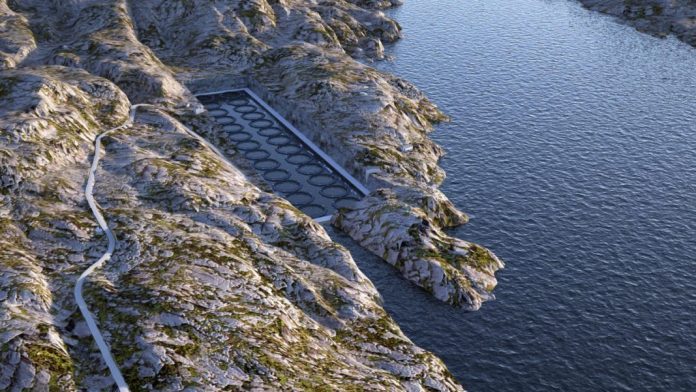Last week a municipal council gave the green light for construction of the giant complex at Losna, county of Sogn and Fjordane.
“The decision was taken unanimously. There is no doubt this is a project that, once it is realised, will have tremendous significance for the municipality, in terms of jobs, activities and revenue,” said the Mayor of Solund Municipality, Gunn Mongstad.
The executive committee had previously given the plans the nod, and after new rounds through the municipal wringer, the municipal council board was now ready to say yes. According to a press release, the whole process from when planning started until the plan was approved last week took just over two years.
Accolades to the municipal council
“It happened really just the way we had planned it,” said a delighted Geir Nordahl-Pedersen, who was the initiator of the plans.
Nordahl-Pedersen was originally an entrepreneur in the oil industry, who is now eager to invest heavily in land-based salmon farming. The complex planned for Losna will cover a total area of approx. 400 acres. The plan is to detonate mountain rock to create a basin 500 x 90 metres, with space for about 28 cages.
Ground-breaking is a word that sums up the project. Much of the technology to be used is new and is being developed along the way. The project is also located in an area that is largely untouched, which required exact documentation of actual area requirements to be presented.
Nordahl-Pedersen gave credit to the municipal council and the good will it has shown for the plans.
“They deserve all the credit. For our part we’ve viewed this almost as a joint project. They (the council) have met up with experienced, positively inclined case managers, which certainly helped to ensure the plan’s adoption,” said Nordahl-Pedersen.
Cleansing of waste material
The consultancy and architecture firm Opus has headed the project.
All waste will be cleansed in the plant, and any discharge water from the plant will only contain nutrient salts. Meanwhile, any problem with salmon lice is avoided.
Sea water for the plant will be pumped up from a depth of 75 metres, thereby providing clean, lice-free water of steady temperature. The complex will have a section for the salmon slaughter plant.
Applying for production license
Due to the council’s affirmative decision, planning of the plant can now continue. The nest step on the way is to be granted a license to engage in salmon production.
“From there we get cracking on the detailed planning. It’s still too early to say anything about when we will put the spade into the ground, but the positive decision from Solund Municipality was of course crucial and an important step in the right direction,” said Nordahl-Pedersen.


